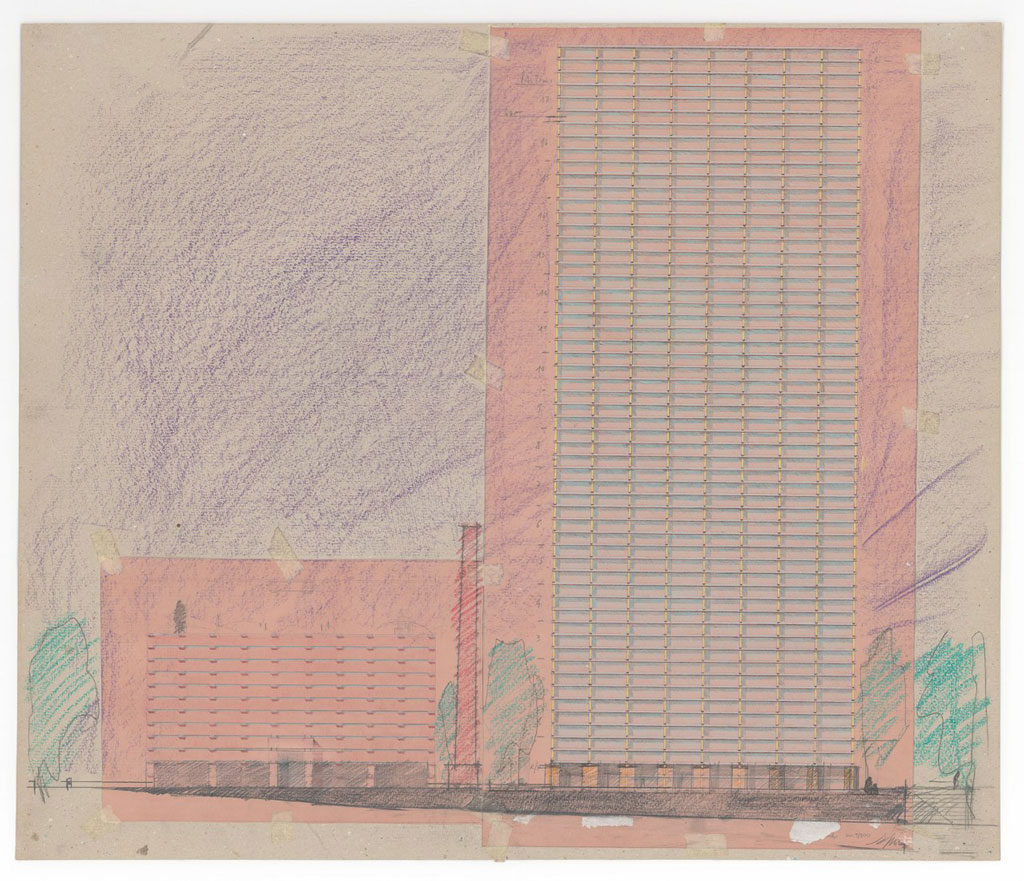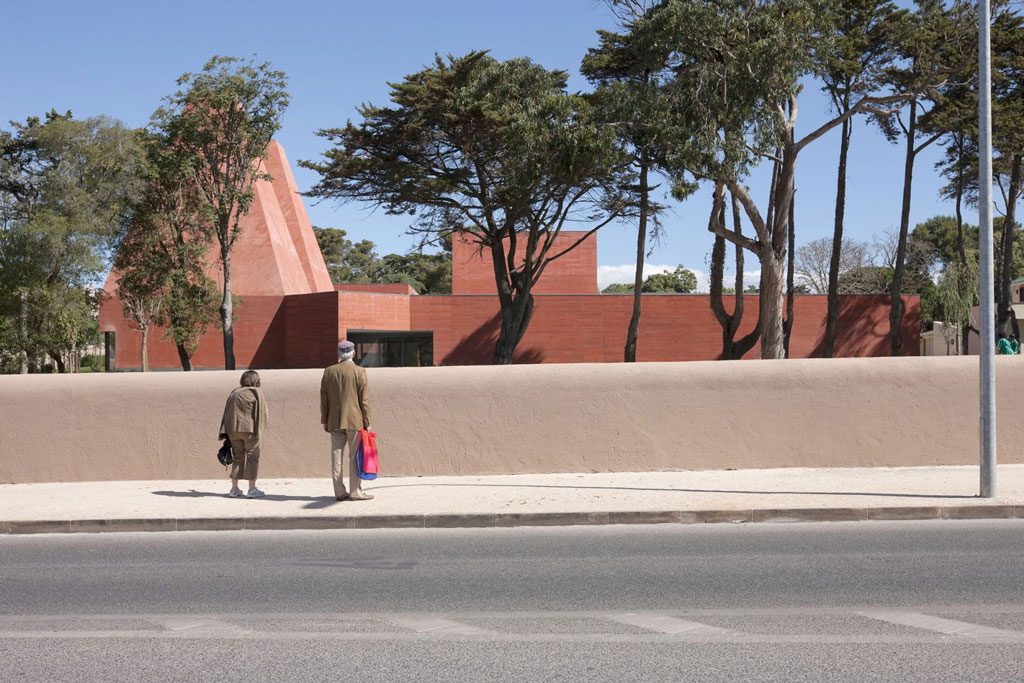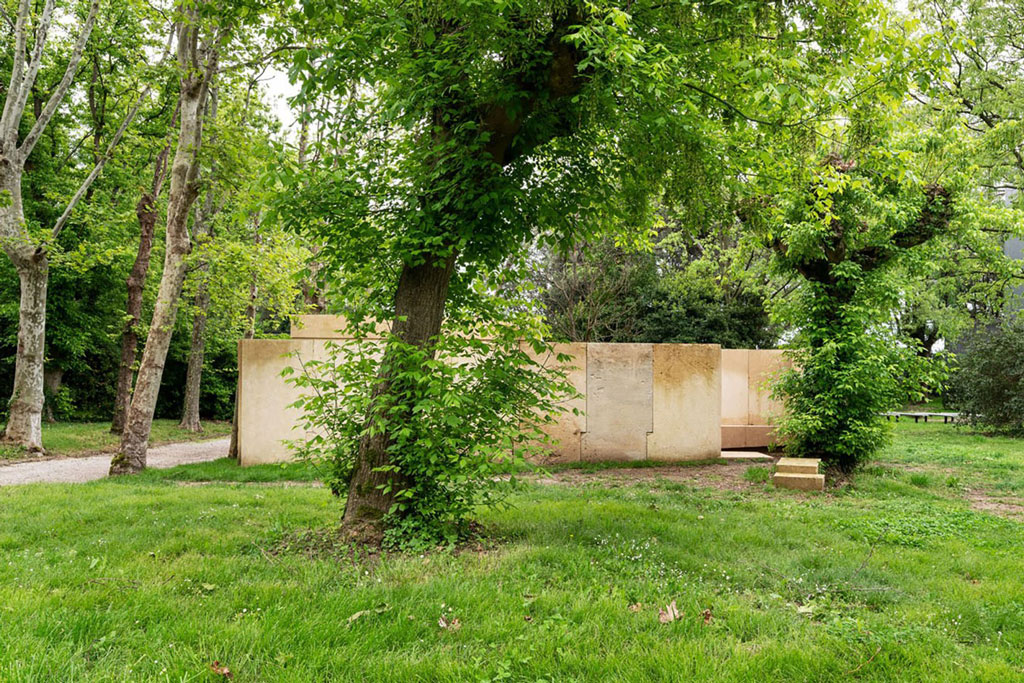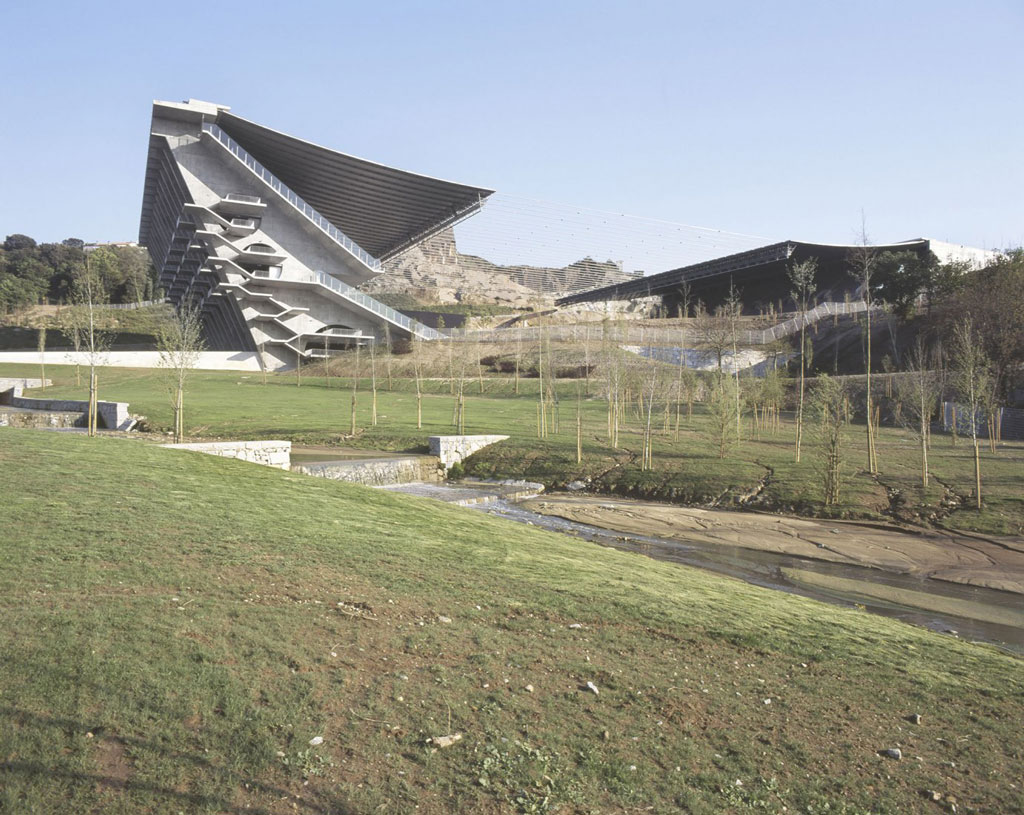ARCHITECTURE:Eduardo Souto de Moura-Memory, Projects, Works
 The work of Eduardo Souto de Moura (25/7/1952- ), combines the abstract minimalism of Mies van der Rohe with a tactile sensitivity and the use of local materials and building techniques. He is one of just two Portuguese recipients of the Pritzker Prize (the other being Álvaro Siza) yet he has never achieved the same International renown as his much fêted colleague. That might seem unreasonable, but considering the fact that Souto de Moura has built very few buildings outside of his native country and that he does not have the same trademark style as Siza, it’s not all that surprising.
The work of Eduardo Souto de Moura (25/7/1952- ), combines the abstract minimalism of Mies van der Rohe with a tactile sensitivity and the use of local materials and building techniques. He is one of just two Portuguese recipients of the Pritzker Prize (the other being Álvaro Siza) yet he has never achieved the same International renown as his much fêted colleague. That might seem unreasonable, but considering the fact that Souto de Moura has built very few buildings outside of his native country and that he does not have the same trademark style as Siza, it’s not all that surprising.
By Efi Michalarou
Photo: Casa da Arquitectura Archive
Adding to the 604 models already kept in the institution since 2009, Casa da Arquitectura is now receiving, as a deposit, around 8500 drawings and all textual and photographic documentation that complements the projects produced by Eduardo Souto de Moura during the last 40 years of professional activity. It includes a large selection of drawings, sketches, notebooks, photos taken during his travels and other occasions, along with large photographs of his buildings. The exhibition “Souto de Moura. Memory, Projects, Works” offers a unique and rare solo show of the work for which he is considered to be one of the most renowned Portuguese architects. The exhibition is a chronologically organized journey through 40 years of the architect’s work, notwithstanding some forays and detours which help to make clear the similarities between projects from different eras. A large selection of drawings, sketches, notebooks, photos taken during his travels and other occasions, along with large reproductions of photos of Souto de Moura’s built buildings, occupy the major space of the exhibition, with the goal to offer to the public a clear image of the complexity of his research and of his professional work. The curators have tried to focus on a set of works that have deemed crucial for a global understanding of Souto de Moura’s work and design method in its various aspects. The exhibition’s material is mostly shown or published for the first time. The drawings, models, personal notes, photographic material and other documents are presented rigorously, exactly as they were entered into the archive, without any changes or omissions. Following his early years at the Italian School, Souto de Moura enrolled in the School of Fine Arts in Porto, where he began as an art student, studying sculpture, but eventually achieving his degree in architecture in 1980. He credits a meeting with Donald Judd in Zurich for the switch from art to architecture. While still a student, he worked for architect Noé Dinis and then Álvaro Siza, years. While studying and working with his professor of urbanism, Architect Fernandes de Sá, he received his first commission, a market project in Braga which has since been demolished because of changing business patterns. He began his career as an independent architect in 1980, after winning a design competition for the Casa das Artes, a cultural center in Porto. In the first decades he primarily focused on residential houses and renovations. However, having gained a fair amount of visibility after designing the Portuguese Pavilion for the EXPO 2000 in Hannover (along with his good friend and one-time employer Álvaro Siza) Souta de Moura’s projects started to vary considerably in both scale and expression. The Burgo Towe in Portugal, designed at the beginning of the ‘90s and built a decade later, consists of two buildings side by side, one vertical and one horizontal with different scales, in dialogue with each other and the urban landscape, the Paula Rêgo Museum, completed in 2008, a grouping of volumes interspersed in the trees at its site in Cascais, Portugal, is both civic and intimate, and so appropriate for the display of art. Other key projects include a museum in Cascais, Portugal, dedicated to the work of local artist Paula Rego, which is composed of a set of geometric volumes in red concrete, and an office complex in Porto that combines a vertical tower and a low, horizontal building. Most recently, he completed a multi-purpose hall extruding from the ground in the small Portuguese seaside town of Viana de Castelo. Aside from the Pritzker Prize, which Souto de Moura received in 2011, he was awarded the Wolf Prize in Arts in 2013 and the Pessoa Prize in 1998 among many others. He also has an honorary doctorate from the Faculty of Architecture and Arts at the Lusíada University in Porto.
Info: Curators: Francesco Dal Co and Nuno Graça Moura, Casa da Arquitectura, Avenida Menéres, 456, Matosinhos, Duration: 18/10/19-6/9/20, Days & Hours: Tue-Fri 10:00-18:00, Sat-Sun 10:00-19:00, http://casadaarquitectura.pt




